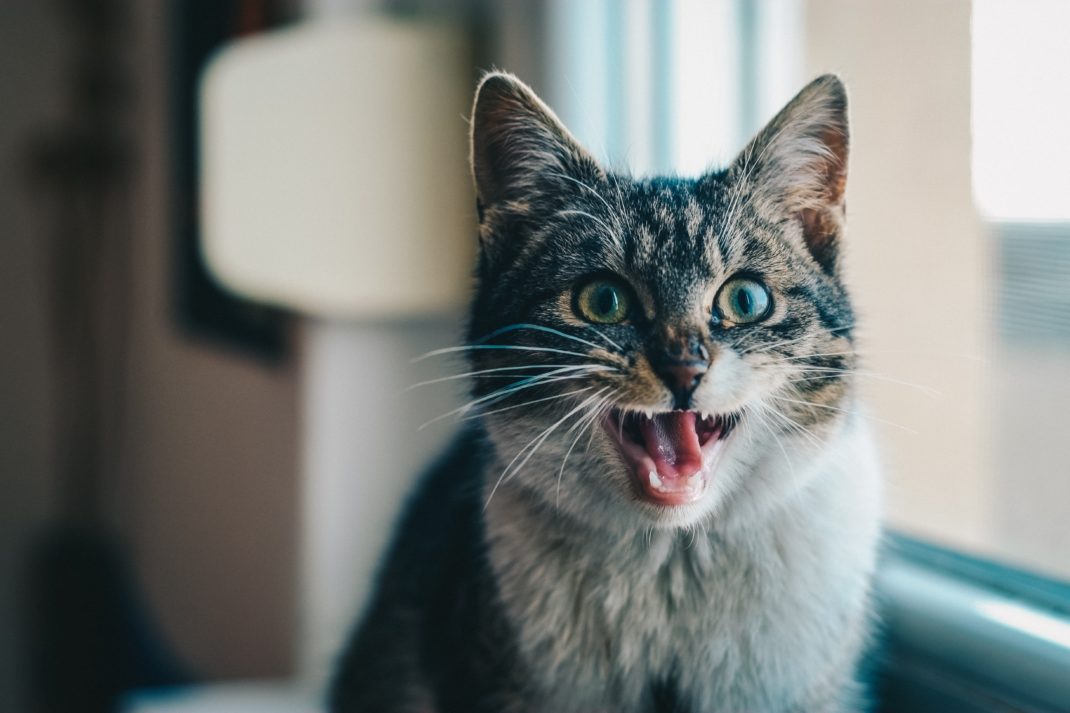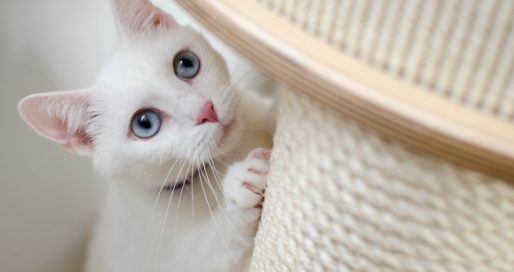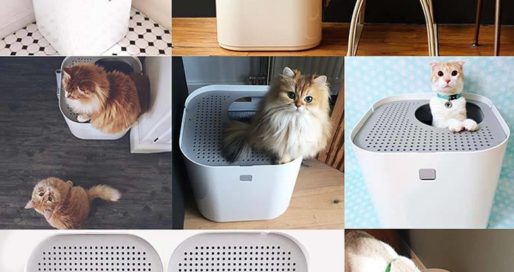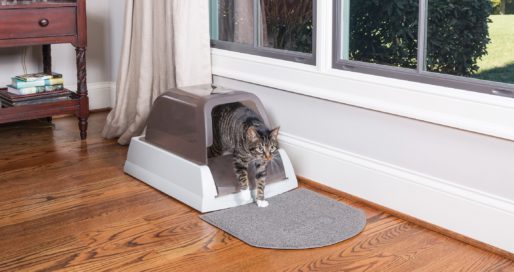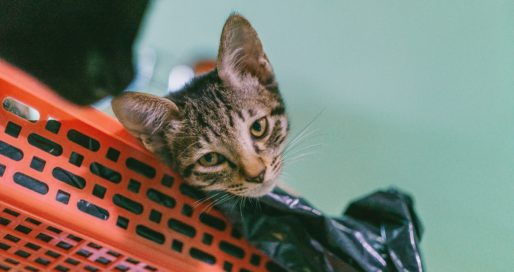There’s nothing quite like the sound of a cat’s meow. With just one seemingly simple vocalization, cats are able to convey a whole range of emotions to their owners, including hunger, fear, or just a simple desire to be noticed. But where did this behavior come from, and why do cats do it?
The Origin of Meowing
Kittens begin meowing very shortly after birth. They use meowing as a way of getting their mother’s attention, signaling their presence so that the mother can keep tabs on each member of her litter. They also use it to indicate when they are hungry, allowing the mother cat to respond by feeding them.
Interestingly, meowing and similar vocalizations, such as purring, are common among newborns from a variety of wildcat species. However, only domesticated cats (Felis catus) retain this behavior into adulthood. This is an example of a phenomenon known as neoteny. We discussed this phenomenon in our article about kneading, another behavior that wildcats abandon as kittens but that adult domestic cats keep doing over the course of their lives.
While cats meow at people with varying frequency, they don’t usually meow at each other in a friendly manner. Cats use a variety of other vocalizations to communicate with one another, including yowls, hisses, and growls, but they refrain from using the variety of casual meows that we as humans are used to hearing. Cats typically only meow at each other out of immediacy, such as when they are in a confrontation with one another or when they are play fighting and one cat begins biting the other a little bit too hard.
Human Interpretation of Cat Meows
Meowing can seem complex language between cats and humans. Cats use meows to communicate a variety of needs and desires, and it’s up to their human owners to decipher their specific meaning. Fortunately, this process is not as difficult as it sounds, and cats are able to get their message across pretty effectively.
Most cat owners can tell the difference between a “let’s play” meow, an “I’m hungry” meow, and a “well, hello” meow. Cats use meows to let us know when they want us to open a door for them, feed them, play with them, pick them up, give them a treat, scratch them, scoop their litter box, and a litany of other tasks. Or, they may also use meows to let us know that they’ve witnessed a murder. It depends on the situation.
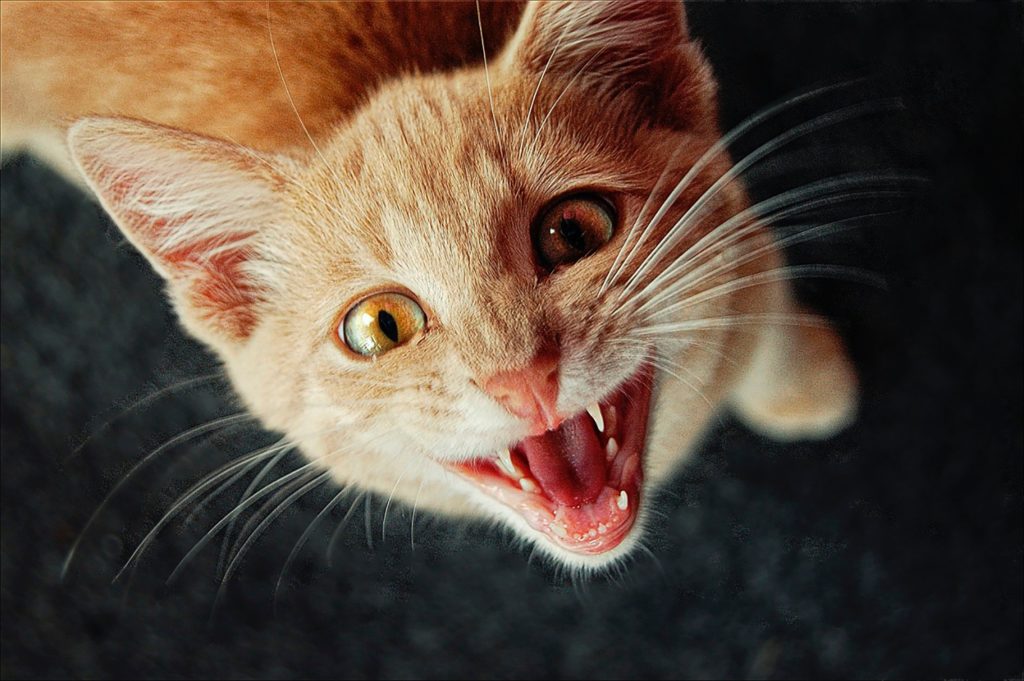
Since cats aren’t learning English anytime soon, this is their most effective way of getting us to pay attention to them and to do what they want. Cats constantly signal their presence by meowing at humans, perhaps as a way of avoiding getting stepped on or kicked by mistake since they sit below a human’s normal eye level.
Cat Conversations
In 2015, researchers from the UK published a study that evaluated how humans respond to cat meows and how well we are able to tell what our cat is trying to indicate based on the meow alone. The study found that cat owners are able to predict the context of their cat’s meows slightly more than chance would predict. However, individuals were not able to predict the context of the meows of other, unidentified cats.
In other words, we can get good at figuring out what our own cat means when she meows, but that doesn’t necessarily translate to other cats. Other cats may meow differently than ours under an identical context. You need to have familiarity with a cat to be able to decipher the intent behind her meows.
Types of Cat Meows and Their Meanings
Cats are able to adjust the tonality of their meow to indicate different things. They can adjust the pitch, volume, and frequency of their meows to match the intensity of their need and their current emotional state. A cat that hasn’t been fed in a while may meow intensely, frequently, and at a high pitch. On the other hand, a cat that would just like a few scratches on the back may meow much more casually at a lower pitch, indicating that the need to be filled is not quite as urgent.
The following list is far from exhaustive, but we’ve tried to assemble some of the most common meows that cats typically make.
Hunger / Feeding Meows
Cat owners are very familiar with the sound of a cat begging for food. Here’s an example of a young cat meowing in anticipation of being fed:
As a cat’s hunger and desire to be fed increases, the pitch, volume, and frequency of their meows will increase as well.
Casual Greeting Meows
Many cats will meow when their owner enters a room after a period of absence. They may also meow upon entering a room. As far as we can tell, the purpose of these meows is simply to get a human’s attention and to make them known of the cat’s presence. These meows often blur into other cat vocalizations, including trills and purrs. The common thread behind these meows is that they are delivered with a low frequency, moderate volume, and at a moderate pitch, indicating the lack of a sense of urgency.
Here’s an example of a cat meowing casually as a greeting to their owner:
Fear / Anger / Pain Meows
Cats meow aggressively whenever they feel threatened, upset, or hurt. These types of meows are often very easy to identify by their screeching, piercing tone, high volume, and rapid frequency. They’re usually combined with other vocalizations, including growling, hissing, and spitting/snorting.
Here is a compilation of angry cat sounds (WARNING: Be careful playing the sound from this video over your computer speakers if your cat is around. He may respond as though there’s an angry cat in the room and become angry and defensive himself):
Invitation to Play Meows
Cats will also meow at their owners when they are ready to play or when they are craving affection. These meows are similar to those exhibited as a casual greeting or when demanding to be fed. They tend to be lower in tone and can vary in frequency.
Here is an example of a cat meowing as an invitation to give them some scratches:
Loneliness/Anxiety Meows
Sometimes, a cat may meow out of loneliness. This is especially true for cats who have been left alone for an extended period of time. These types of meows are common during the middle of the night, especially among younger cats. Since they are still full of energy but their owner is asleep, they may feel as though they are alone and begin meowing for companionship.
Here is an example of a cat meowing out of loneliness:
How Much Meowing is Too Much?
Cats are like people: some of them are noisier than others. You may be the owner of a particularly chatty cat, or a very quiet cat that rarely meows audibly. Factors that may impact the frequency and tonality of your cat’s meow include breed, anatomy, environment, andpersonality.
Cat meowing behaviors can change over time as your cat ages or goes through lifestyle changes. I have personally experienced cat meowing behaviors changing with age and environmental conditions. My household cat growing up, Rocket, meowed infrequently until she passed the age of ten. In her old age, she became much more vocal, meowing casually as a greeting and whenever she was hungry and ready to be fed.
My current cat, Hunter, also experienced something similar. He spent his entire life with another companion cat, Keanu, who was the loudmouth of the pair. Unfortunately, Keanu was diagnosed with liver cancer in 2016 and had to be put to sleep shortly thereafter. After Keanu’s passing, Hunter gradually became more vocal, taking on the role of meowing in anticipation of feeding that Keanu used to fill. He also delivers far more casual greeting meows than he used to when Keanu was around.
Impact of Breed on Frequency of Meowing
Cat “talkativeness” also varies based on breed. As a rule of thumb, short-haired breeds tend to be a bit noisier than long-haired breeds. Of course, breed alone does not determine how often a cat will meow. There are plenty of examples of noisy long-haired breeds and quiet short-haired breeds. Here is a list of cat breeds that are known to be traditionally quiet or talkative:
- Quiet Cats: Persians, Blue Chartreux, Russian Blue, Norwegian Forest Cat, Bengals, British Shorthairs
- Talkative Cats: Siamese, Oriental Shorthairs, Burmese, Tonkinese, Japanese Bobtail, Sphinx
Potential Health Issues That May Result in Frequent Meowing
While some cats may meow frequently just to hear the sounds of their own voices, as a cat owner you should be on the lookout for any changes to your cat’s usual meowing patterns. There are several medical conditions which may cause your cat to meow more frequently than normal, including:
- Deafness: In the same way that a human who is going deaf will begin speaking more loudly, a cat who is going deaf will begin meowing more loudly
- Feline Alzheimer’s: Cats may begin meowing if they become confused or disoriented as a result of cognitive impairment.
- Separation Anxiety: Cats will meow when they are lonely
- Thyroid, Kidney, or Heart Disorders: Each of these conditions may cause increased vocalizations
Cats may also experience increased hunger or thirst as a result of an ailment, or they may be in physical pain. Each of these symptoms may cause a cat to meow more frequently.
If you are concerned about your cat’s meowing frequency, you should bring them to a vet immediately. This is especially true if you have noticed a recent change in your cat’s typical meowing patterns. Cats can suffer from laryngitis if they meow too frequently, as may be the case if they are in pain or distress. Keep in mind that many cats meow frequently by nature, including healthy, playful kittens and cats that are adapting to new environments or recent changes to their lifestyle. Still, if you have a concern, ask your veterinarian to take a look.
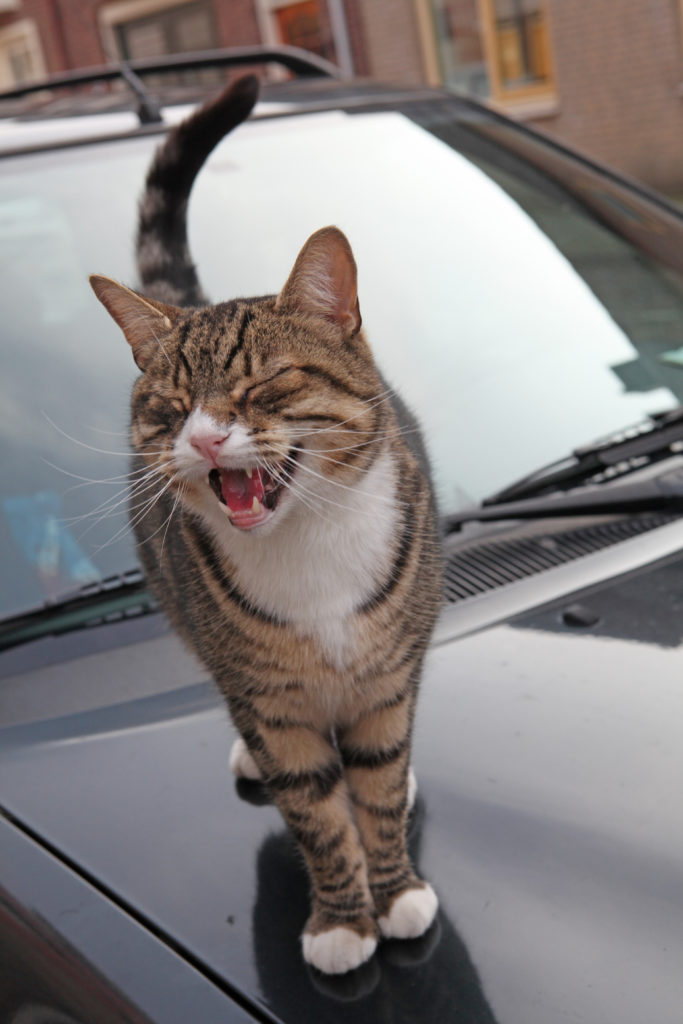
Meowing at Night
Sometimes, cats will engage in frequent midnight meow sessions. Even worse, these “midnight” sessions actually occur closer to 4 AM. There are a number of reasons why cats do this.
Instinct
Cats are instinctually programmed to hunt in the early, pre-dawn morning. It’s cooler, allowing them to expend energy and recover more quickly than they would in the afternoon heat. This is also when they’re typically starting to get pretty hungry if they haven’t eaten for a while. A cat that wants to hunt but can’t may meow in frustration.
Hunger
A hungry cat will meow as a way of getting its owner to feed him. If your cat is meowing for their early morning meal at 4 AM, you may want to consider giving them a later feeding time the evening beforehand.
Recent Change in Lifestyle
If you just moved to a new location, got a new pet, lost a long-time pet, or have instituted some other major lifestyle change, your cat may respond with night meowing.
Should I Meow Back?
Many cat owners talk to their cats. In fact, we tend to adopt certain patterns and types of speech when addressing our cat, similar to the way we may speak to a baby or small child. We tend to speak more musically and with a higher pitch when talking to cats than when speaking with other humans. But little is currently known about the vocal interactions between humans and cats and their associated impact on cat vocalizations.
In 2016, a research team in Sweden received funding to complete a study that focuses entirely on the vocal exchanges that occur between humans and cats. The project, entitled “Meowsic,” aims to evaluate melody in human-cat communication. They plan on observing how cats and humans use prosody, or patterns of rhythm, tone, and sound, when communicating with one another. This study will help us understand the complexities behind human-feline communications.
Other Cat Vocalizations
Meows are just the tip of the iceberg when it comes to cat vocalizations. It’s difficult to talk about meowing without discussing the other sounds that cats make. This is because meowing often blends into other vocalizations, making it difficult to distinguish between the two.
Chatter
The most common place to hear a cat chatter is on a windowsill. Cats typically only chatter when potential prey is in sight, usually a bird. Chattering resembles the sound a bird makes. There are a number of theories as to why cats chatter, but the prevailing reasons are: anticipation of a hunt, frustration, or excitement.
Trill / Chirrup / Murmur
Trilling (or chirruping) is a mix between a purr and a meow. Cats usually do it when they’re in a good mood, and they use it as a casual greet or an invitation to scratch or play. Unlike meowing, cats do not trill to get attention.
Growl / Snarl
Cats growl or snarl if they feel threatened. It is usually a precursor to aggression, and it is used as a warning that a cat is about to attack. Be careful around a growling cat. Cats may growl out of territorial possessiveness, irritation, anger, or fear.
Hiss
Like growling, cats hiss when they are feeling upset or threatened. Always observe caution around a hissing cat.
Caterwaul
Caterwauling is a sound that resembles howling or wailing. There are a few reasons why a cat may make a caterwaul noise, including a desire to breed (if the cat is not spayed or neutered), pain, or fear. Caterwauling and yowling are very similar, but caterwauling has the distinction of being associated with breeding.
Purr
Cats purr whenever they’re feeling happy and content. Purring is another example of neoteny, and it is only rarely observed among wildcats. Purring can also signal that a cat is in extreme pain or distress, so be aware if you notice your cat purring much more than usual. Typically, though, a purring cat is a happy cat.
Yowl
Cats yowl when they are feeling lonely or upset. The yowl is another common vocalization among cats that are preparing to be aggressive.

